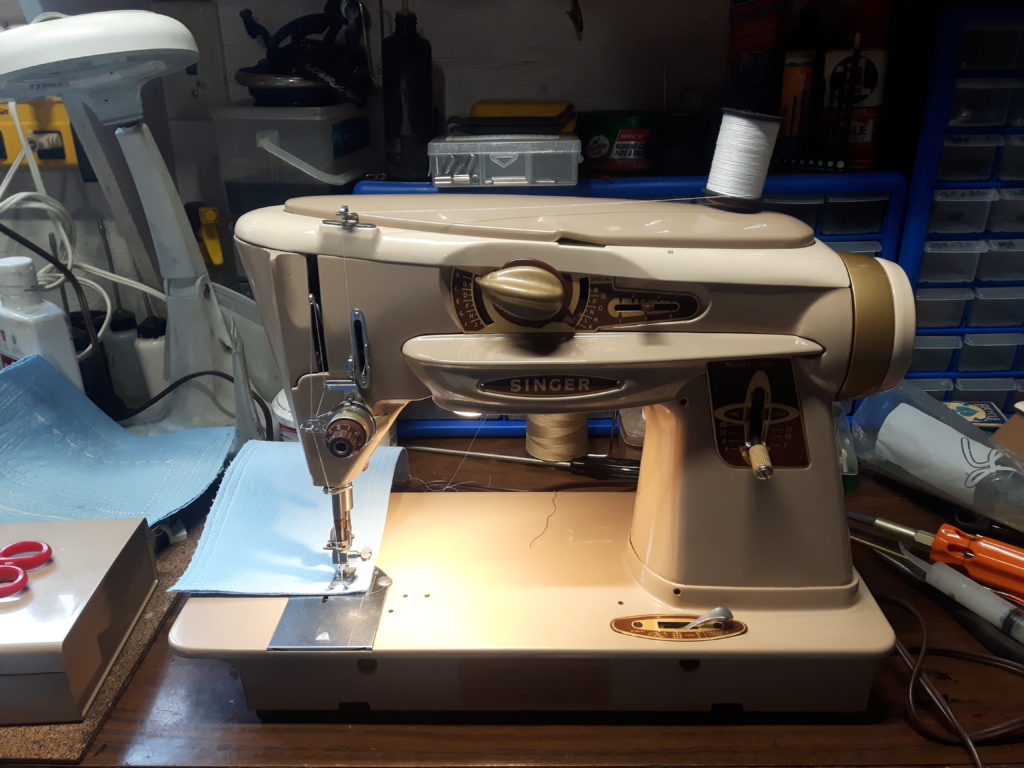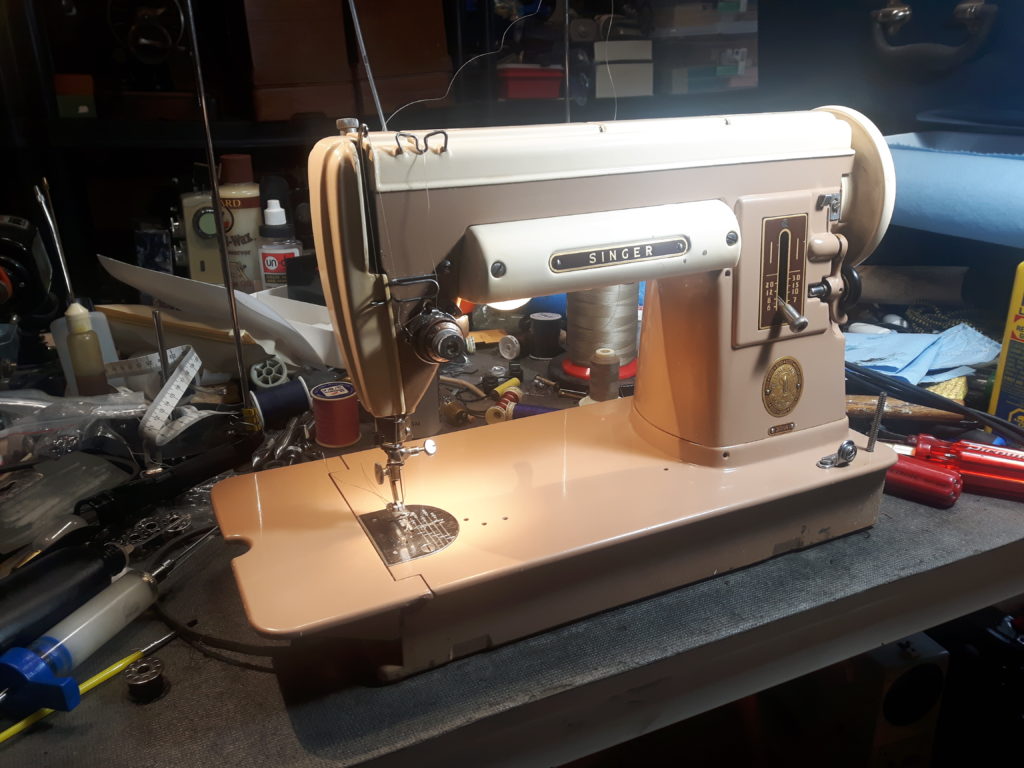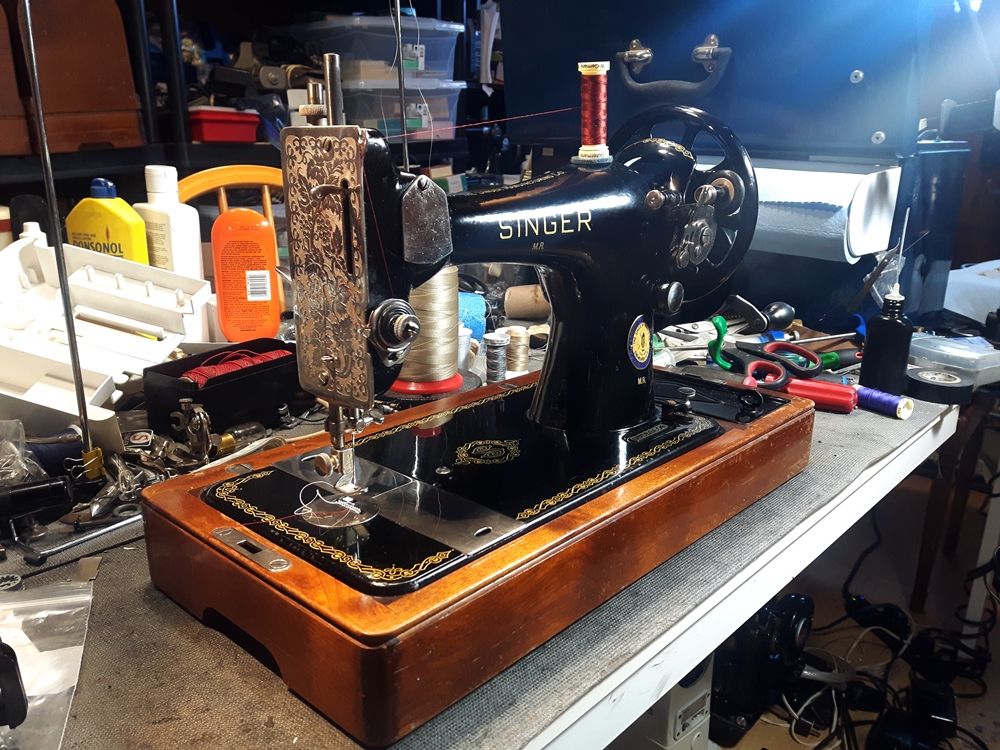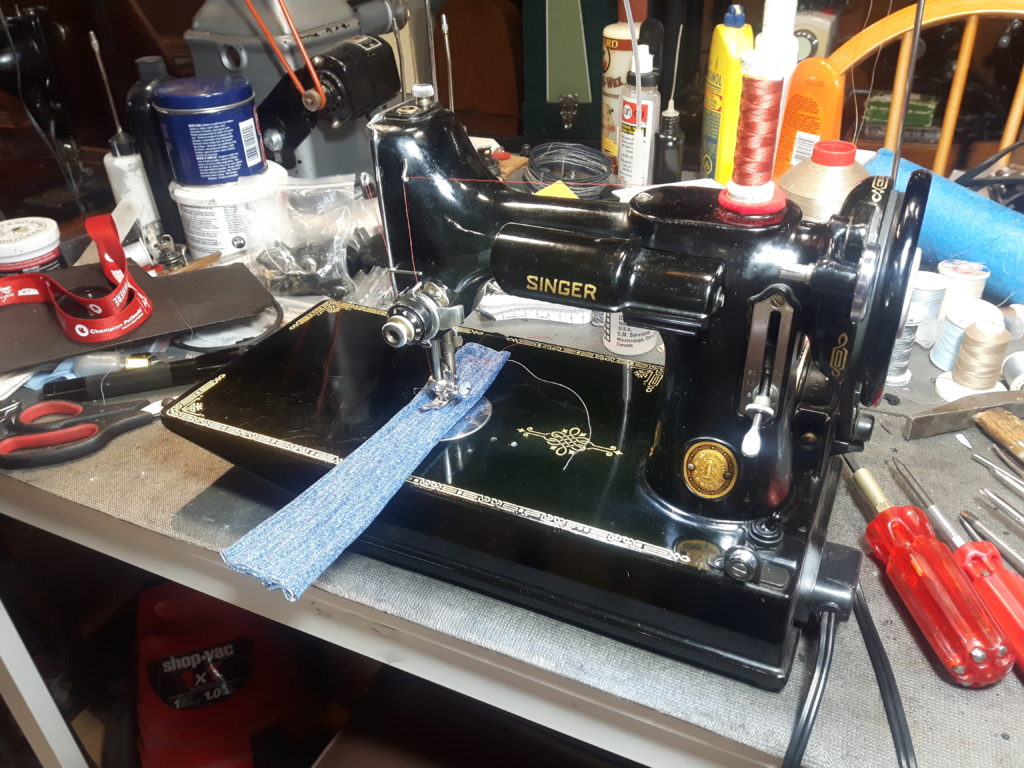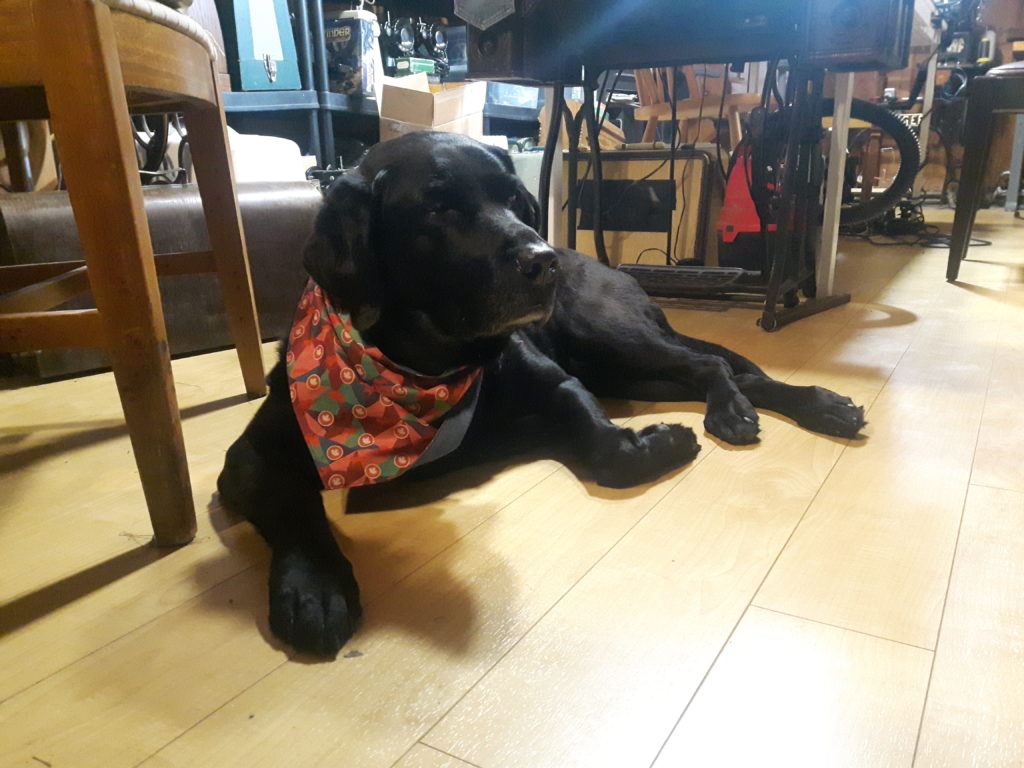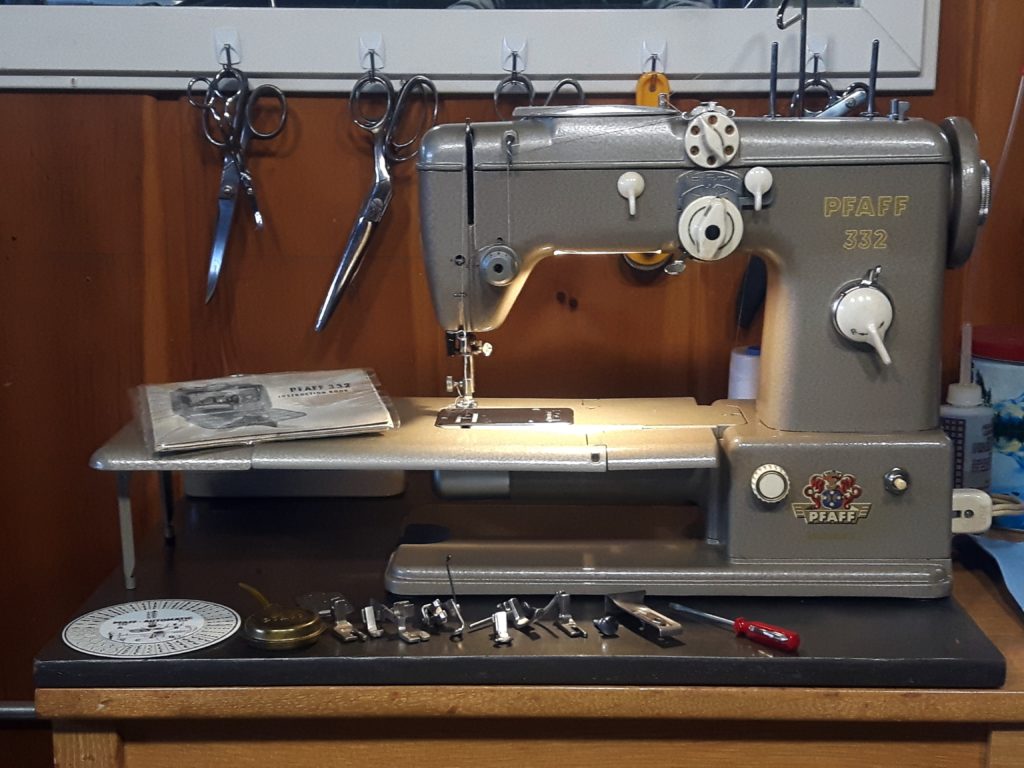
Pfaff is a very old sewing machine company founded in 1862 by Georg Michael Pfaff who was an instrument maker, and by 1910 they had already sold a million machines, not many relative to Singer but still quite a milestone.
By 1950 they hade produced 5 million machines and were producing the venerable model 130 and in the mid 1950’s they introduced the 260 flat bed, and it’s sister, the free arm model 332 are mechanical marvels. These models added built in stitch capability far beyond what the 130 could do with it’s external embroidery attachment and were competing head to head with companies like Bernina, Husqvarna and Elna. these companies had also introduced multi stitch models with the Bernina 530 also having built in stitch capability.
The finish is the same as Pfaff’s industrial models and is quite durable, the white dials can crack if the machine is stored poorly or abused but rarely fail.
Open the hood on a 260 or a 332 and you will think you are looking at a clock, or an automobile engine as these are extremely complex machines internally, but from a users standpoint a very straightforward machine to use, save for needing a Rosetta stone, or a stitch wheel to set the machine up for it’s range if utility and embroidery stitches.
These are extremely powerful machines that will sew anything you can get under the foot, and have a presser foot system designed to sew heavy fabrics, while being able to sew the finest silks and cottons.
They are also very fast, being capable of sewing 2500 stitches a minute with nary a vibration.
The stitch quality of these machines is perfect whether you are straight stitching, zig zagging, or using one of the many decorative or utility stitches, a drop feed allows you to do free motion and the vertical rotary hook is well suited for this kind of work.
Although this model is now almost 70 years old, they are still highly sought after, primarily by people who sew more than those who collect machines for display… if they are used regularly and kept oiled they work flawlessly day in and day out.
They rarely have any mechanical issues no matter how hard they have been used, but can be quite a bit of work to free up if they have been left to sit for long periods of time.
Like the Husqvarna 21, the Pfaff 260 and 332 set the template and a standard for Pfaff machines well into the 1970’s with models like the 360 and 1222 which are also outstanding in their own right.
I am somewhat partial to the pure mechanical machines like the 332 that have no extra electronics like needle position sensors, or automatic needle lifts, and because they were the first of their kind.
Happy sewing.






